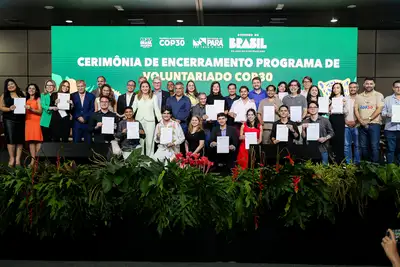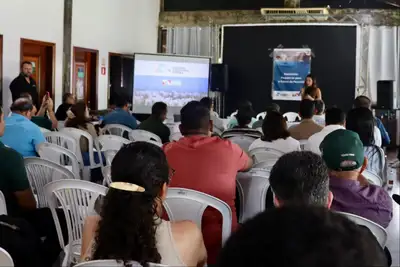GDP of Pará: Fapespa releases data on economic performance for the 2nd quarter
In the year-to-date, the GDP of Pará grew by 6.23%, driven by the agricultural sector. The result remains above the national average (2.53%).
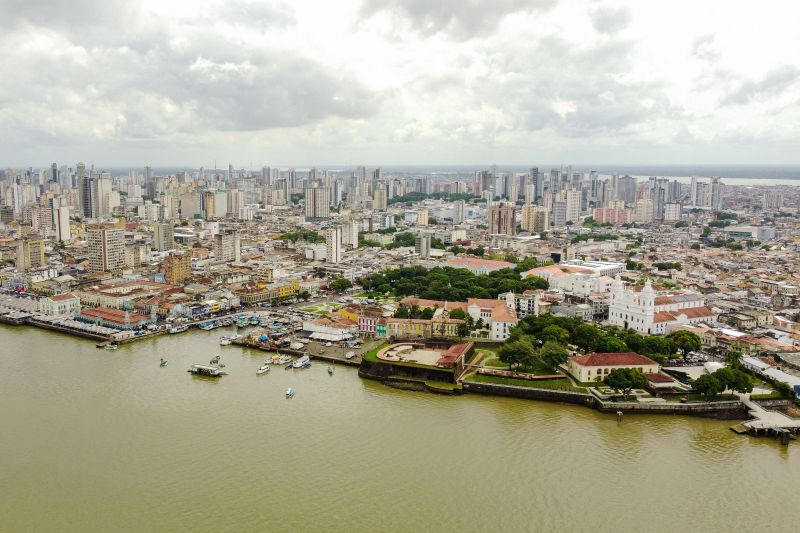
The GDP of Pará was approximately R$ 72.2 billion in the second quarter of the year. This represents a growth of 5.72% compared to the same period last year. The result demonstrates the strength of the Pará economy, which grew by 0.63% compared to the previous quarter, a pace above the Brazilian average (0.37%).
This data is included in the 2nd Quarterly GDP Bulletin of the State of Pará for 2025, released by the Amazon Foundation for Support of Studies and Research (Fapespa) on Thursday (23), at the I campus of the Federal University of the South and Southeast of Pará (Unifesspa) in Marabá, in southeastern Pará.
Prepared by the Directorate of Statistics and Technology and Information Management (DETGI) of Fapespa, based on data from the System of Quarterly National Accounts (SCNT/IBGE), the 2nd Bulletin provides the most updated analysis of the economic performance of Pará in 2025, highlighting the main economic sectors: agriculture, industry, and services, as well as the behavior of the state GDP compared to that of Brazil.
Fapespa Bulletin speeds up reading of scenarios in Pará
The publication aims to contribute to reducing the lag in the dissemination of regional GDP data and to ensure greater transparency and access to information for public managers, researchers, and society in general. "The quarterly GDP is important due to its speed of information, as it overcomes the two-year delay of previously released GDP information, and now we have a closer estimate with quarterly data," informs Rickson Oliveira, a Fapespa scholarship holder and collaborator in monitoring the state and municipal GDP of Pará.
When comparing the economic performance of Pará in the 2nd quarter of 2025 with the immediately preceding quarter, it is observed that the state GDP grew by 0.63%, a result above the national average of 0.37%. The advance was mainly driven by the agricultural sector, which maintained a pace of expansion superior to that recorded in the country, reaffirming its relevance to the Pará economy.
Despite the positive performance, other sectors showed contraction during the period. The industry declined by 1.57%, impacted by the drop in iron ore prices, which, according to a report from Vale, recorded a reduction of US$ 5.7 per ton compared to the previous quarter. Meanwhile, the services sector experienced a decline of 1.31%, influenced by reductions in transportation activities (-3.9%) and public administration (-7.7%).

In summary, the Gross Value Added (GVA) of Pará grew by 0.29%, a performance similar to the national average (0.33%). When including taxes, the state GDP recorded a variation of 0.63%, demonstrating the stability and resilience of the Pará economy even in a scenario of sectoral fluctuations.
Accumulated growth for the year
In the year-to-date, the GDP of Pará maintains a performance superior to the national average, with a growth of 6.23%, while Brazil recorded 2.53%. According to the Fapespa study, the good performance of the Pará economy in the second quarter of 2025 was mainly driven by the agricultural sector, which showed an accumulated growth for the year of 17.87%.
The growth was supported by favorable weather conditions and the expansion of corn and soybean harvests, in addition to advances in traditional crops such as cassava. Livestock also maintained positive performance, benefiting from the appreciation of the price of fat cattle. "The agricultural sector has shown consistent recovery this quarter, driven not only by temporary crops but also by livestock, which has maintained a growth rate above the national average since last year, which increases the price of meat and consequently the activity," highlights Thays Santos, a technician in development management, science, technology, and innovation at Fapespa.
The Pará industry followed a positive trajectory, registering a growth of 2.79%, driven by the performance of the transformation industry (+20.23%), energy production and distribution (+6.02%), and mineral extraction (+2.38%).
In the extractive industry, the increase in production at the S11D (Canãa dos Carajás) and Salobo (Marabá) units partially compensated for the drop in international iron ore prices, which showed an average decline of US$ 5.7 per ton compared to the previous quarter. In the transformation industry, notable activities included metallurgy (+12.1%), wood products (+14.3%), and beverages (+10.9%), reflecting the gradual recovery of consumption and the strengthening of the domestic market.
"The positive performance of electricity distribution was influenced by above-average rainfall, favoring energy production in hydroelectric plants; moreover, the occurrence of consecutive holidays during the quarter contributed to higher energy consumption," explains Thays.
Meanwhile, the services sector showed an increase of 2.60%, mainly driven by commerce activities (+7.13%) and public administration (+2.88%), reflecting the gradual warming of the economy and the expansion of service offerings to the population. According to data from the General Register of Employed and Unemployed (CAGED), the services sector generated 9,517 new formal employment links in the second quarter of 2025, evidencing the recovery of the labor market and the strengthening of the tertiary sector in the state.
In addition to the numbers, the results can also be checked through the Interactive Dashboard of the Quarterly GDP of Pará, a trilingual tool (Portuguese, English, and Spanish) that allows tracking the evolution of the state GDP since 2012 and making comparisons with the national scenario, as well as associating indicators with the Sustainable Development Goals (SDGs).
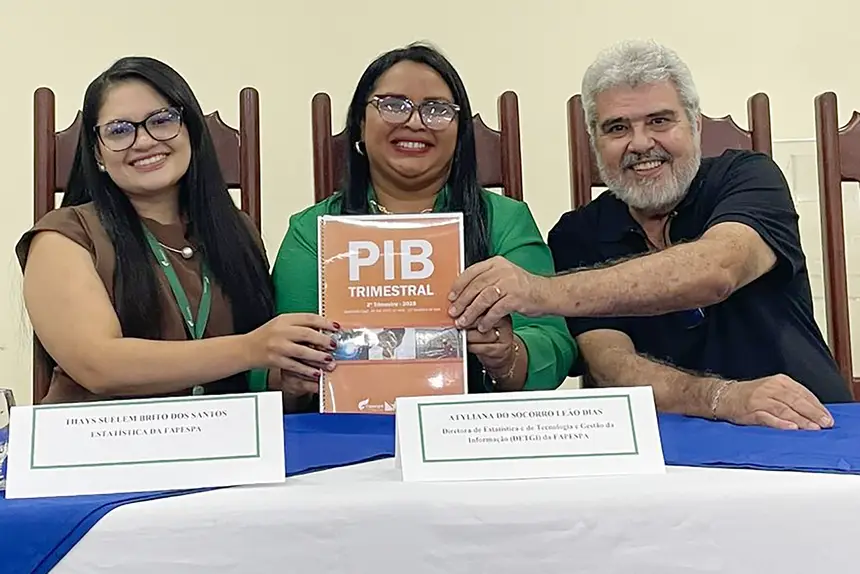
Launch in Marabá: science and regional development
Traditionally held in Belém, the launch of the Quarterly GDP edition for the 2nd quarter of 2025 was held in Marabá, reinforcing Fapespa's commitment to decentralization and strengthening the institutional presence of the State throughout the territory.
According to the DETGI team, the choice of Marabá reflects the recognition of the economic relevance of the South and Southeast of Pará, regions that concentrate strategic activities in the mineral, agricultural, energy, and services sectors, with a strong influence on the behavior of the state GDP. "It is a city that is confluential in the sense of bringing together the surrounding cities, municipalities that are also mining and livestock cities. So these cities have Marabá as a center that, let’s say, will distribute this production," details economist and Fapespa researcher Edson Sousa.
For the president of Fapespa, Marcel Botelho, holding this event in the interior of Pará symbolizes the institutional commitment to the interiorization of scientific and economic dissemination actions, considering the continental dimensions of the State and the logistical challenges characteristic of its territorial reality.
The event also highlights the Foundation's partnership with Unifesspa, part of the Bioeconomy Network along with UFPA and UFOPA. "The participation of Fapespa representatives in the launch integrates the scope of the Pará Network Program for Studies on Regional Accounts and Bioeconomy, a strategic initiative that promotes cooperation between universities and research centers, strengthening knowledge production and technical alignment among partner institutions," highlights Botelho.
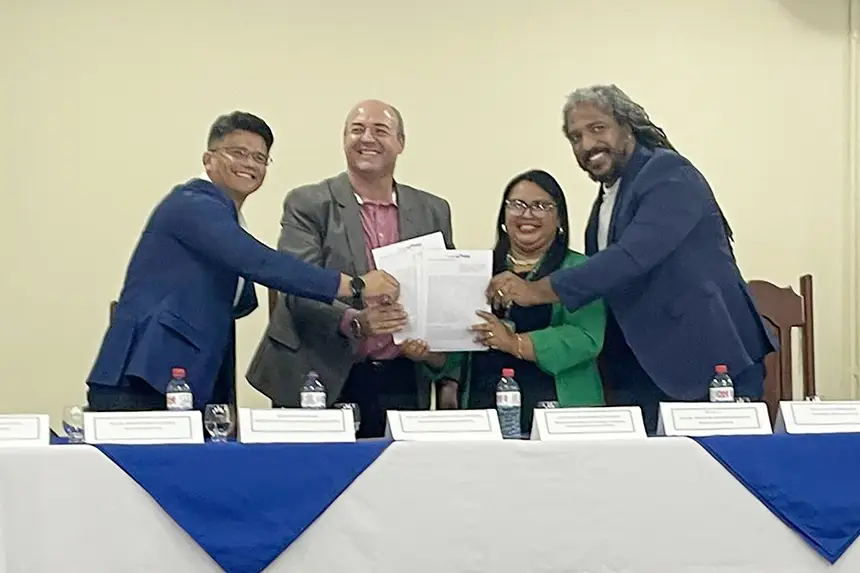
More information about the sector highlights and the complete bulletin can be found on the Foundation's website, access here: www.fapespa.pa.gov.br/contas-regionais/






